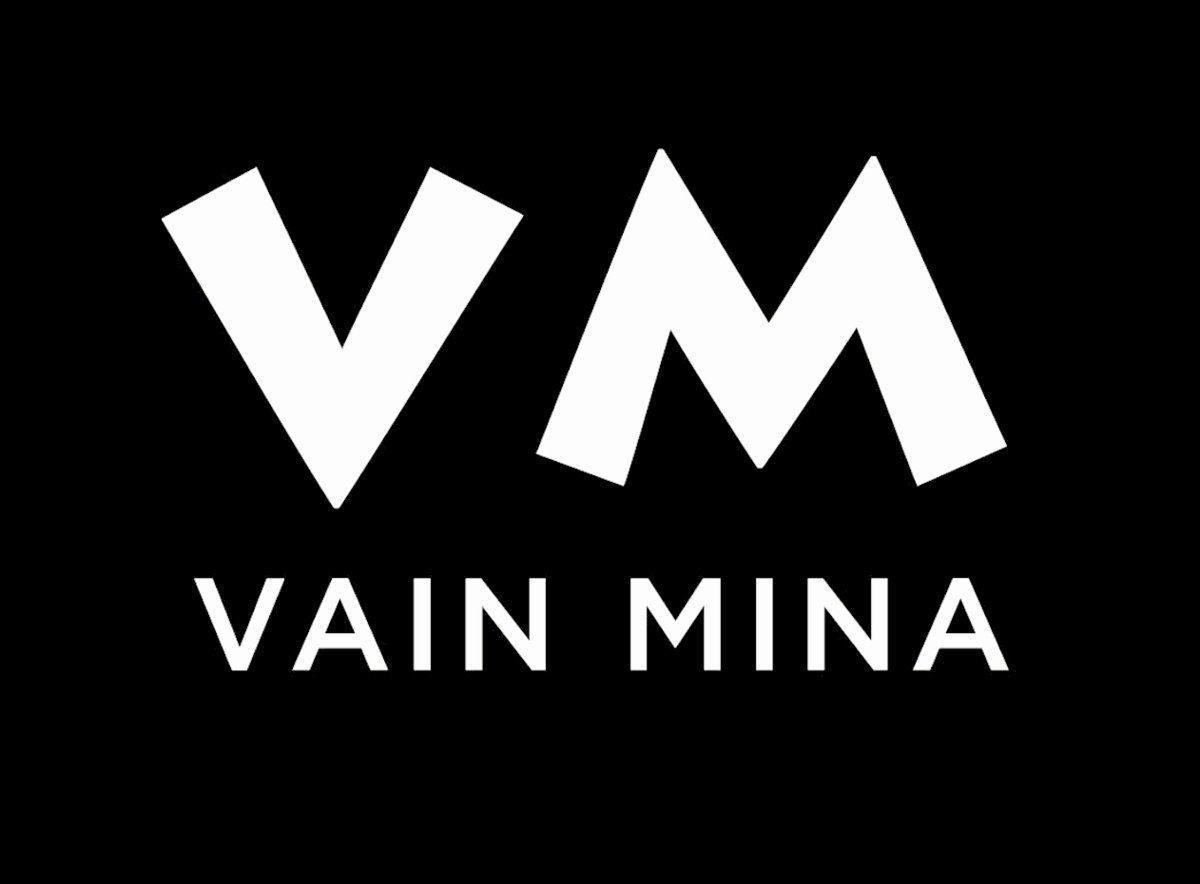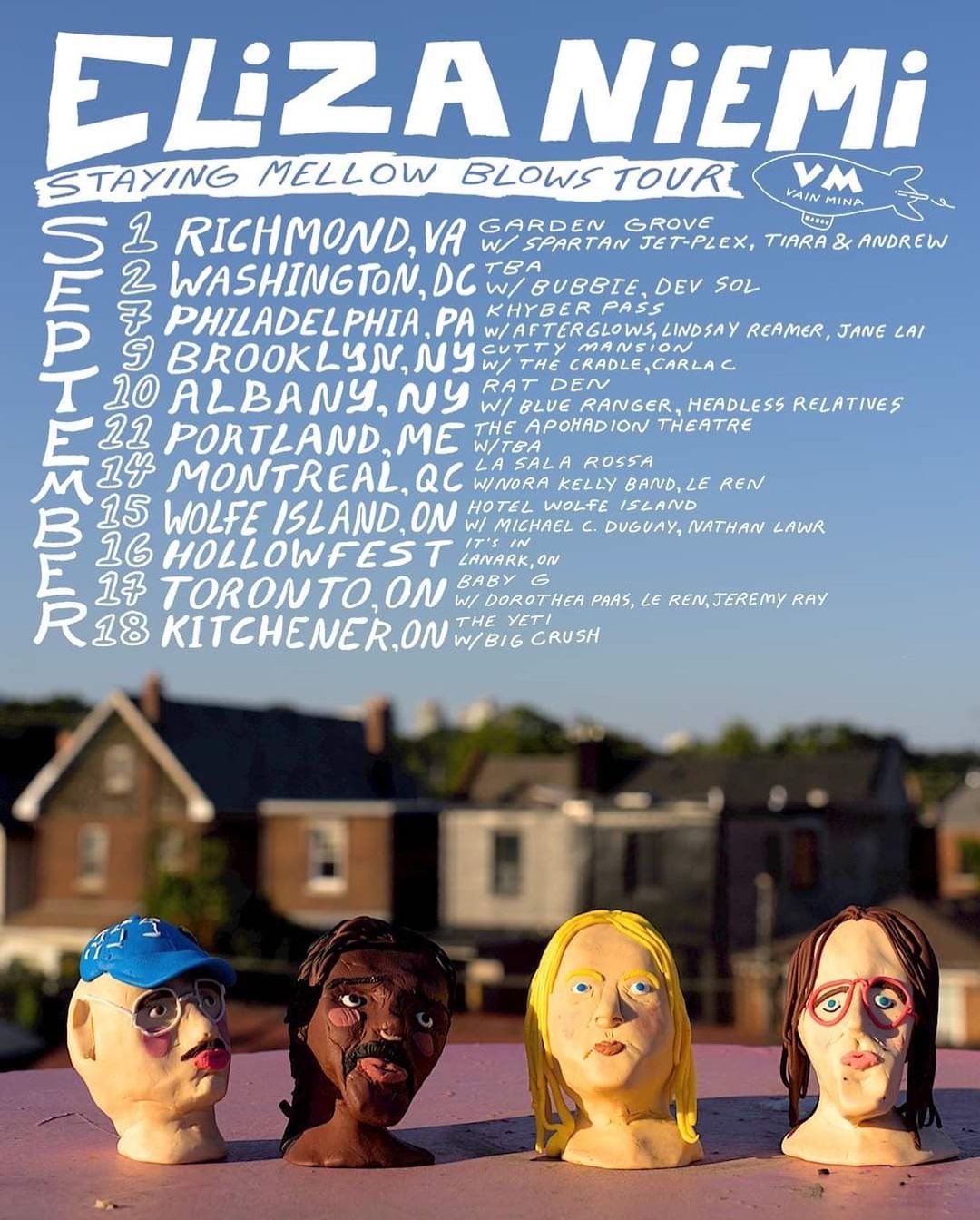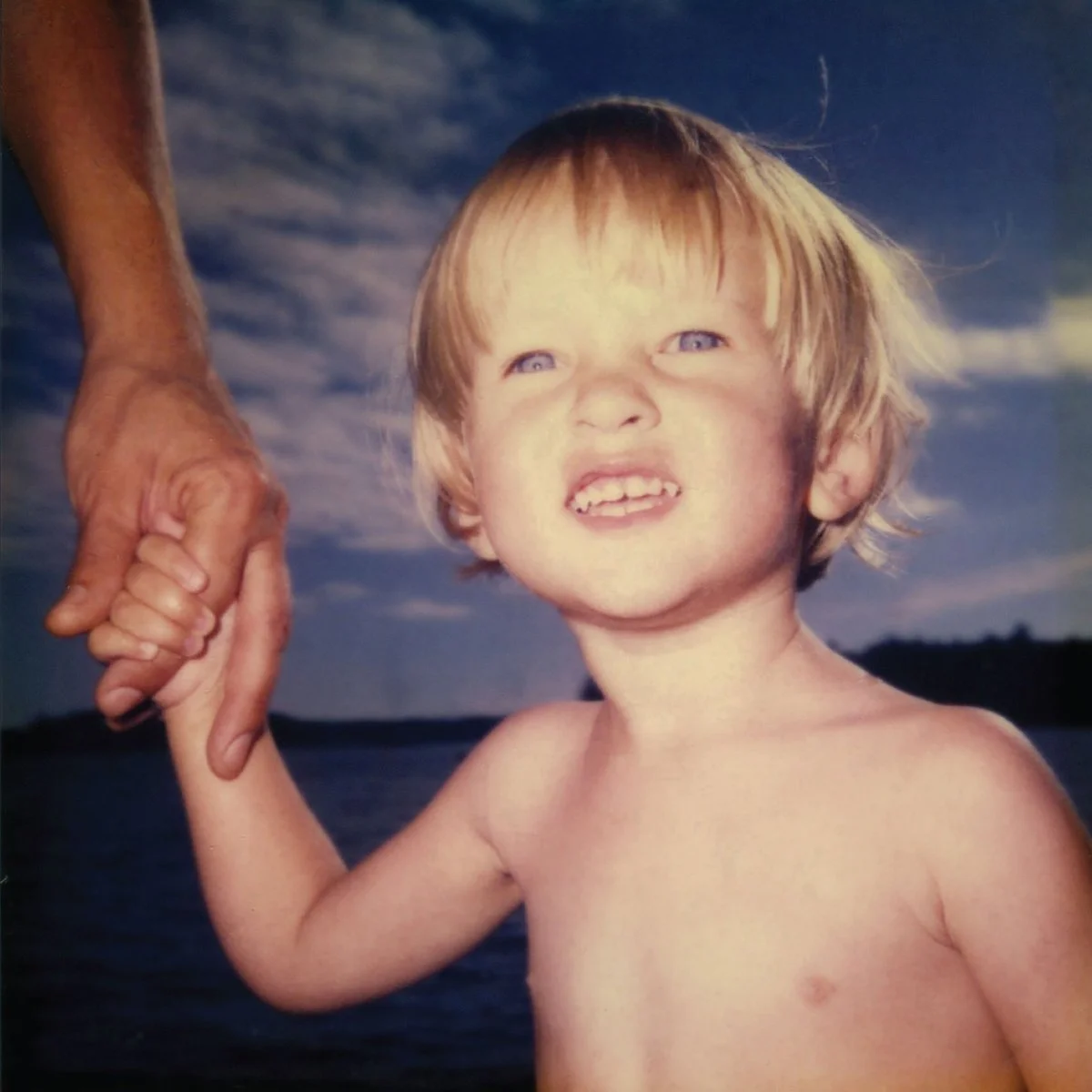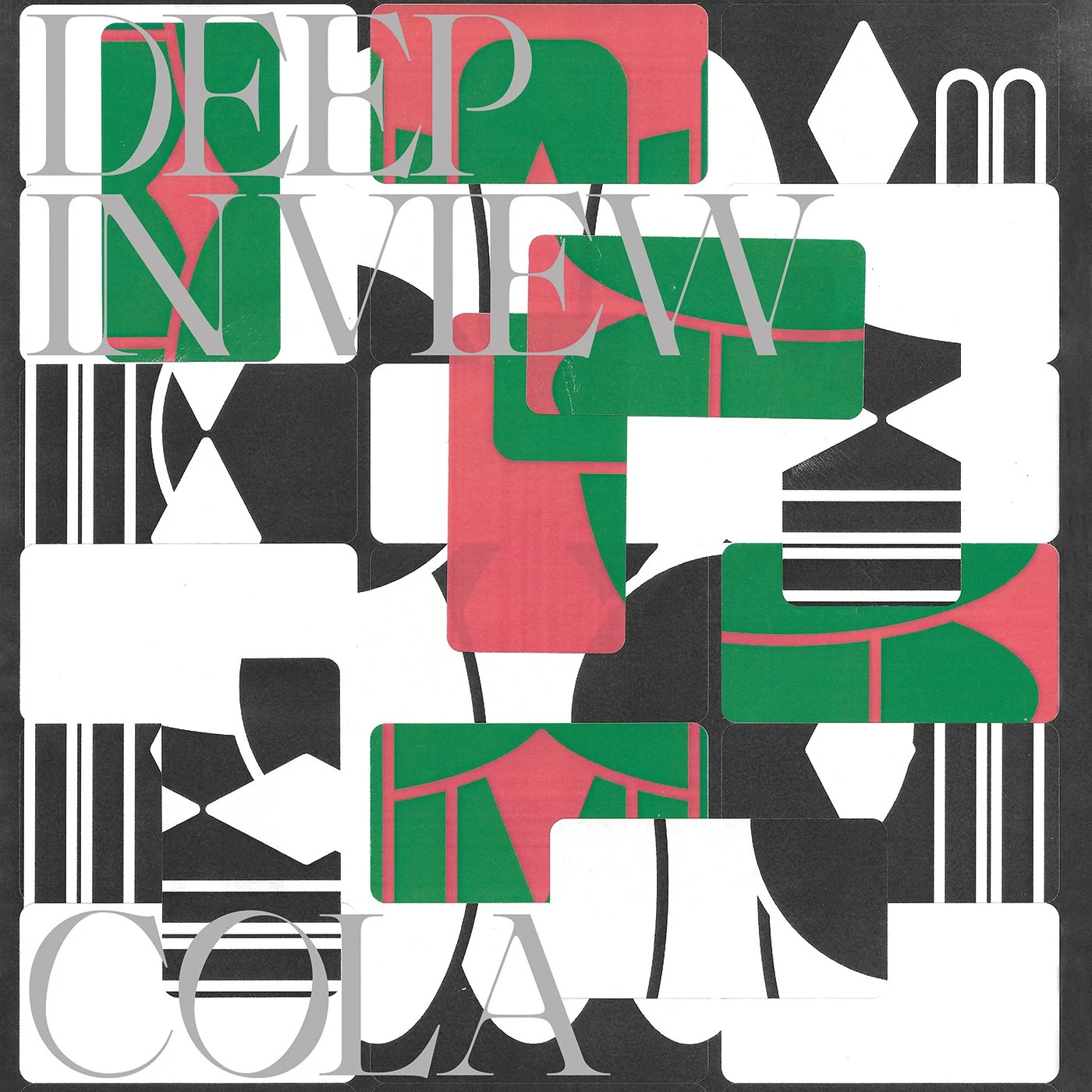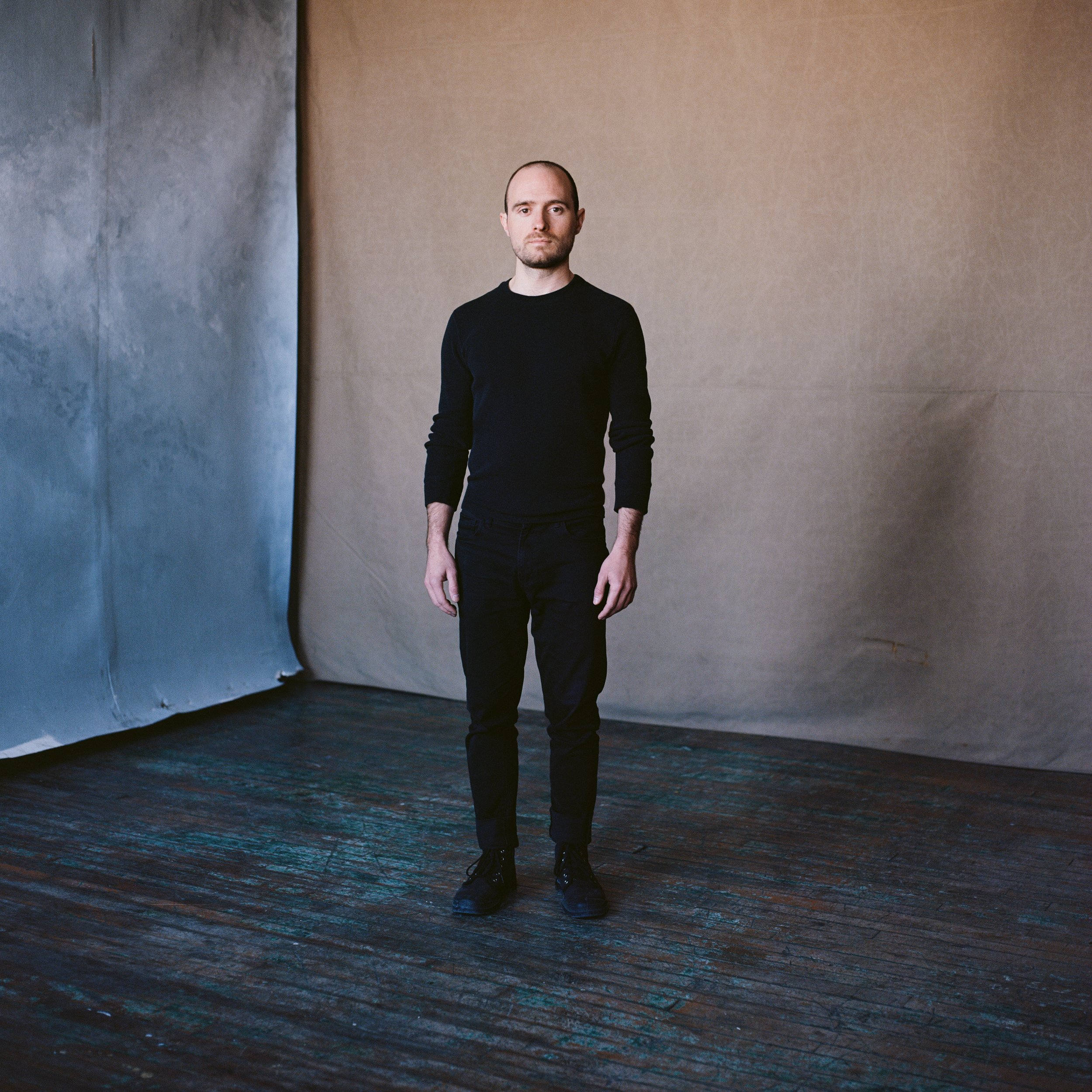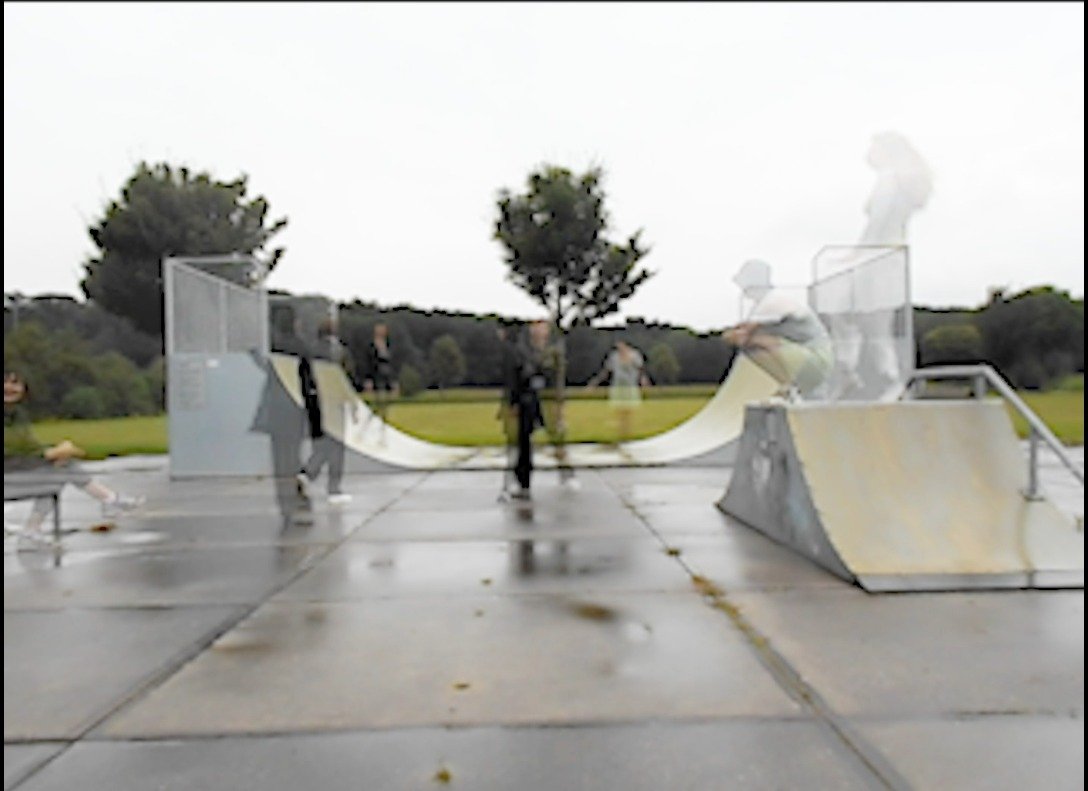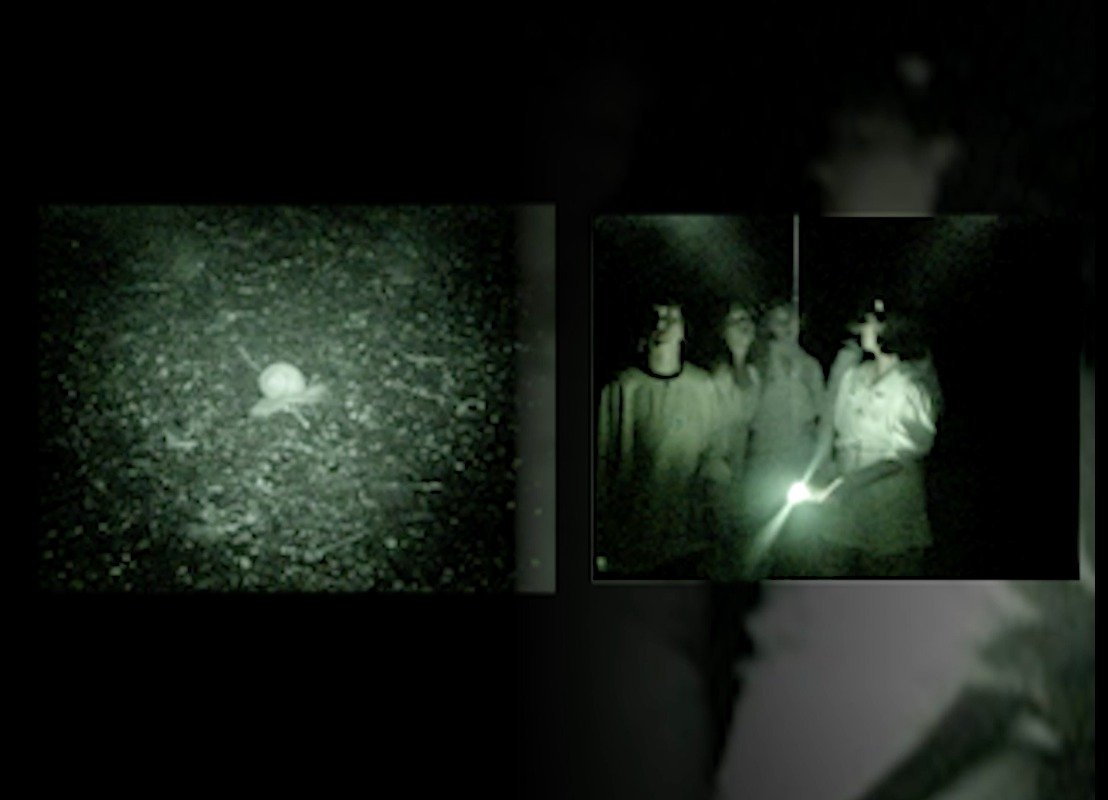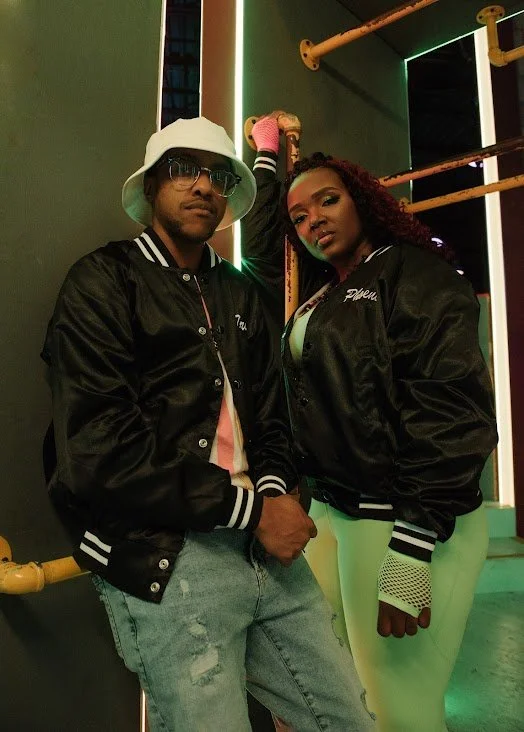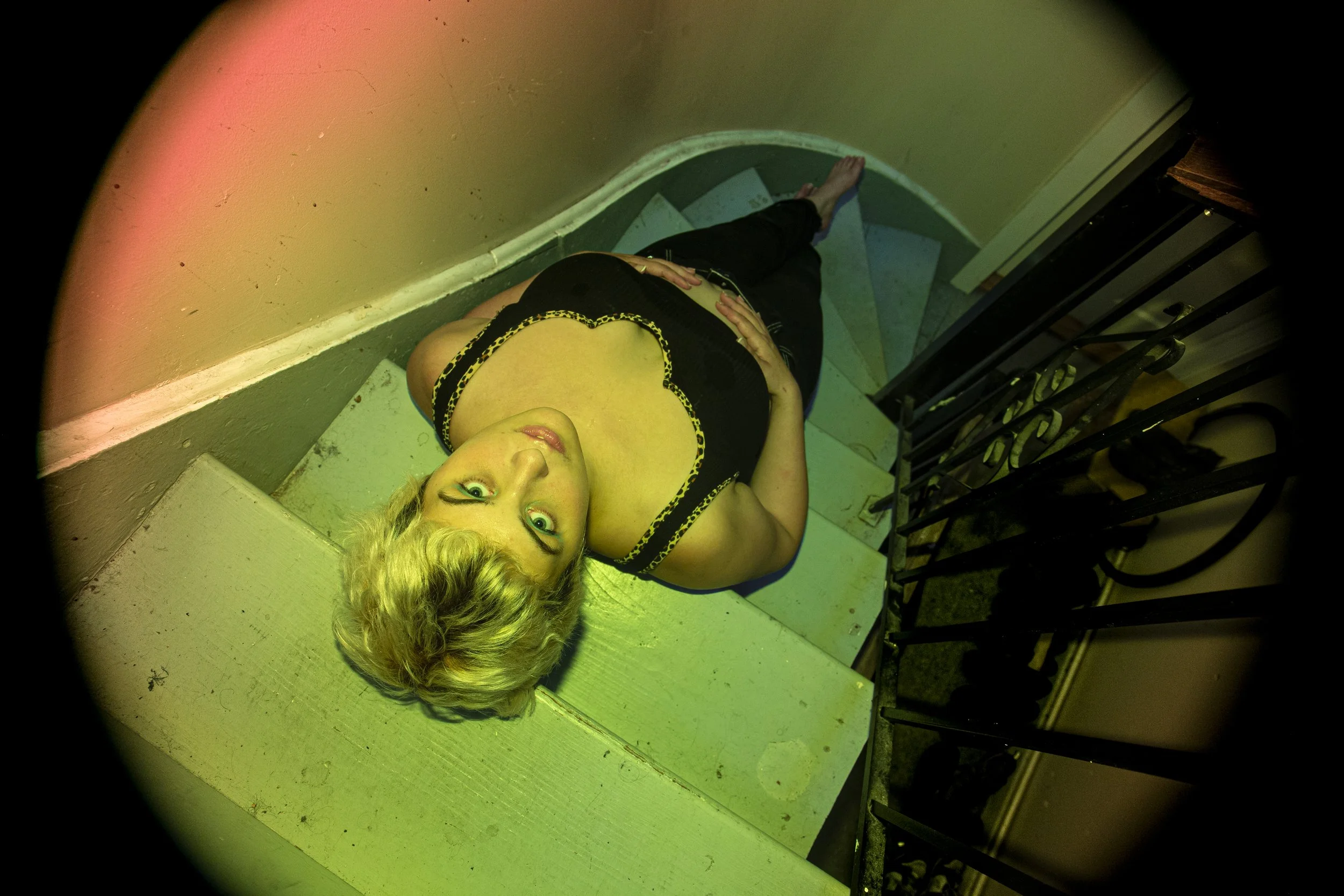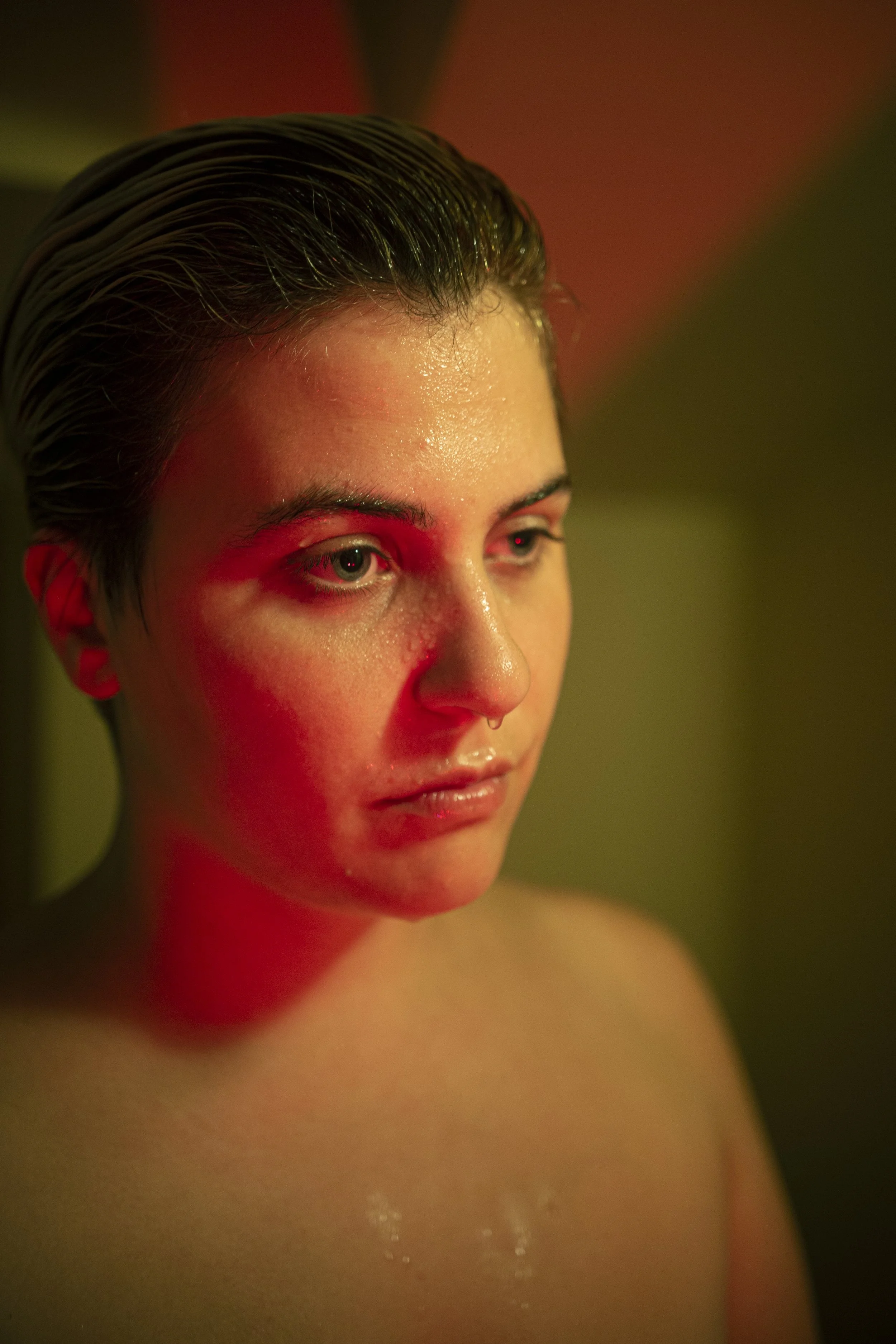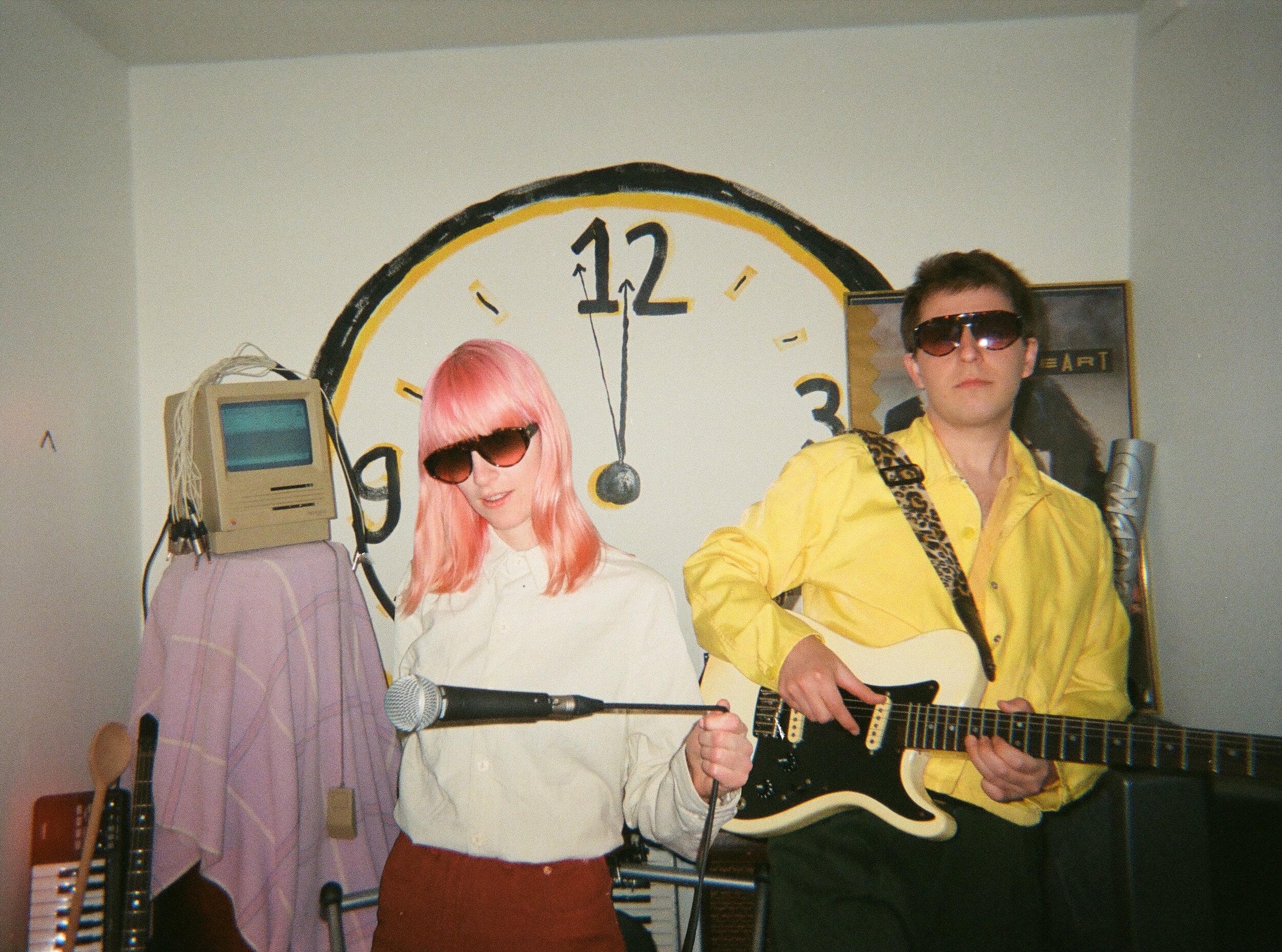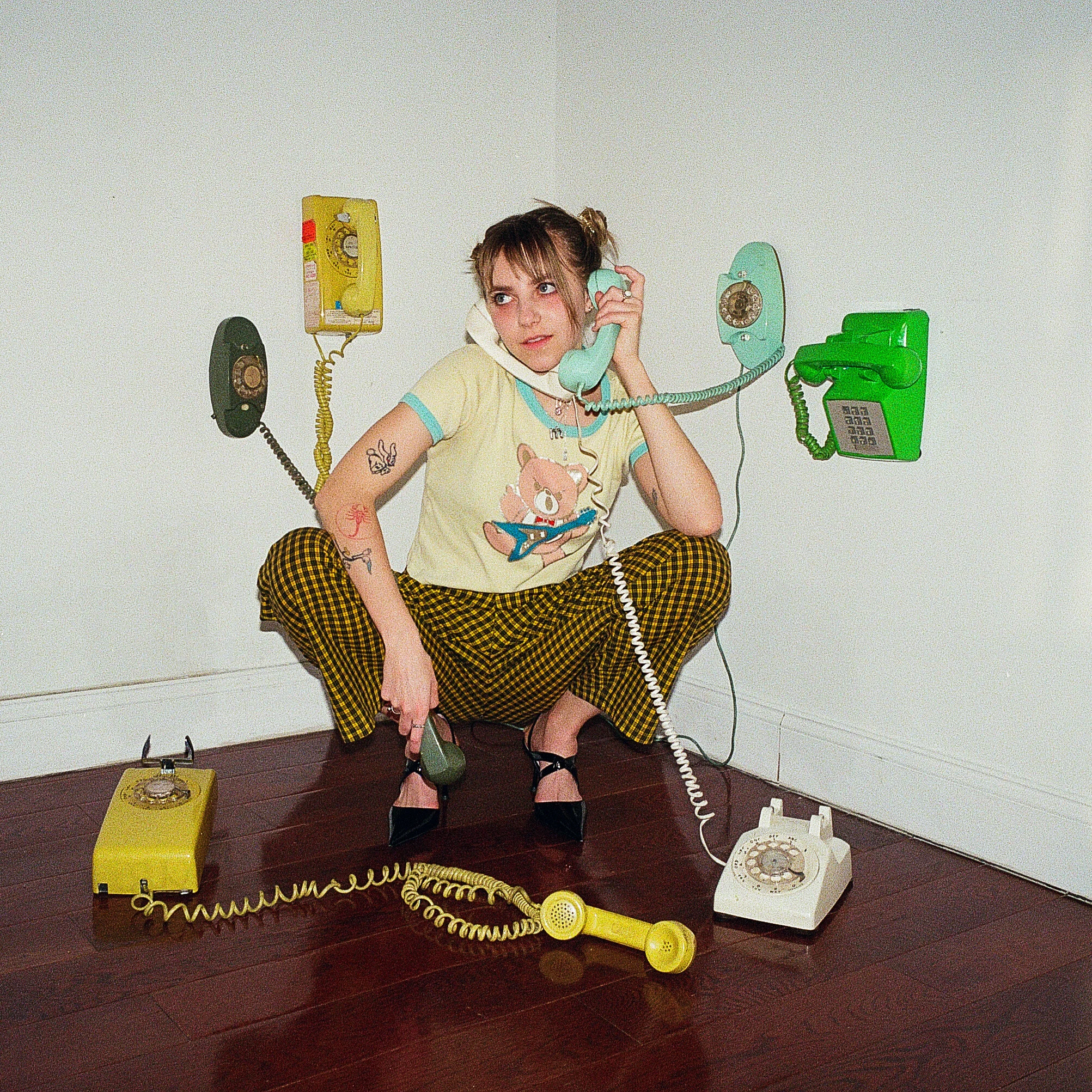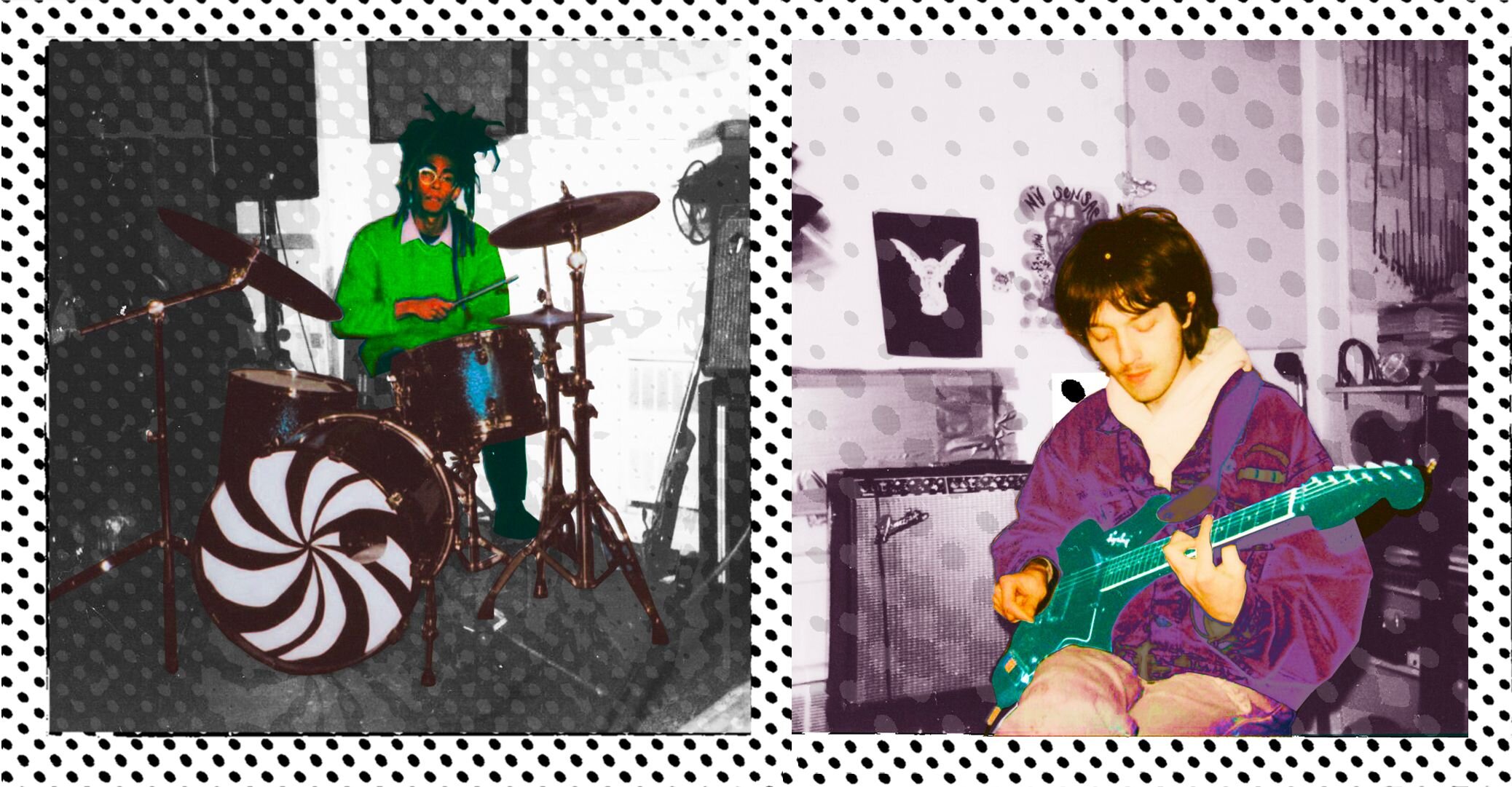Between Frankness and Cheekiness is Eliza Niemi's "Staying Mellow Blows" (Vain Mina / Tin Angel Records)
Eliza Niemi by Ben Mike
Alt-folk raconteur Eliza Niemi’s knack for sincerity and surrealism make her masterfully endearing. The Toronto-based multi-instrumentalist and singer first found her footing in so-called Canadian indie circles with her former band Mauno and since disbandment, has established a solo-venture defined by striking idiosyncrasy and collaborations. Now, Niemi finds herself with two EPs under her belt and operates an independent record label, Vain Mina, on the side.
Niemi’s deft and illustrious approach is refined on her to-be-released LP Staying Mellow Blows, out August 5th, 2022 on Vain Mina and Tin Angel Records. Between cello musings, folk experimentations and modular synth flirtations is Niemi’s most bountiful collaboration to date—a testament to her talent and creative kinship. Staying Mellow Blows features contributions from 19 confidantes within Niemi’s web and charts a back-and-forth intrinsic to community ties; transcending its pandemic-bound gestation period.
In our conversation with Niemi, we had the chance to discuss how Staying Mellow Blows evolved in passing through many hands, the way she is sustained by innovative relationships, and the experience of getting a tramp stamp of her album name.
Read the full interview below!
Eliza Niemi by Ben Mike
Zoë Argiropulos-Hunter for Also Cool: You are a prolific world-builder when it comes to your collaborations. How has your creative process transformed from the solitary practice captured on your first EP, Vinegar, to that being realized on your to-be-released Staying Mellow Blows?
Eliza Niemi: With Staying Mellow Blows, I wanted to preserve the solitude and intimacy of my older EPs in the core of the songs, but make the arrangements a joint effort with the other players on the album. I basically wrote a bunch of songs on cello, guitar and keys, and then sent them around to my friends all over North America to build on. Some were a bit more collaborative in earlier stages, like how "Walking Feels Slow" was co-written from the start with Will Statler, or "Sushi California" and "Trust Me" were co-produced by Mike Fong.
This record was my first time fully recording and producing my own vocals, cello, keys, and guitar. That part of the process was quite solitary. It created a cool dichotomy with the deeply collaborative process of all my friends writing and layering their own parts overtop. It was like I leaned even further into the intimacy and introspection of my previous releases—which were recorded by Louie Short in a small studio here in Toronto—and then turned that on its head by completely opening it up to other musicians' perspectives. I think in this way, my creative process has expanded both inwards and outwards. Making this record has been an exercise in understanding myself and in letting go—trusting the people around me.
Also Cool: Branching off of that: Did working with your friends bring about anything of the album that you hadn't initially expected?
Eliza Niemi: Sending these vulnerable, raw songs to my far-away friends and having them interact with them so honestly was a beautiful way to feel close to them. It was an emotional process receiving everyone's stems over the pandemic. I put a lot of careful thought into whom I asked to play on which songs, but didn't give anyone specific direction. Each friend blew me away with their sensitive and brilliant playing and singing. The odd time when I would send two players the beds of a song simultaneously, they would send back parts that serendipitously worked perfectly with one another. It was pretty magical. Each player expanded their song(s) in ways that I never would have been able to. The album is almost like a web of emotional and musical conversations.
AC: You and your hive are close-knit in more ways than one. Can you tell me about how these relationships contribute to your label Vain Mina?
EN: I started Vain Mina as an imprint for my first solo release, mostly to seem more legit to press and industry people, while still being able to own all the rights to my music. "Vain Mina" is adapted from the Finnish vain minä which means "only me,” with a sort of childish inflection. I called it that somewhat ironically because I was setting out to do everything myself, but it ended up being birthed from the efforts of many members of my community.
Mark Grundy (Heaven For Real, Quaker Parents) had been involved in DIY labels back in Halifax, and had been self-releasing music for a decade. He helped me a ton at the beginning. I'd say we basically started the label together. Our second release was Quaker Parents' Our Drawing Club in 2019. Louie Short has been our resident engineer from the beginning and has worked on all of mine and others’ releases to-date.
We all play on each other's recordings as well. I guess we're a collective… Bolstering each other and aiding one another in self-releasing under the label name. We're trying to organically build something with like-minded people and facilitate transparency, artists owning the rights to their music and knowing exactly what's going on at all times. The evolution of the label has felt natural in this sense... We’ve continued to link up with people who share this vision and have gone from there.
AC: Going back to Staying Mellow Blows: Your leading singles are accompanied by music videos with an uncanny undertone in commonality. What informs your visual and online identity?
EN: In line with the collaborative nature of this album, I brought songs to friends who make visuals and gave them free reign to interpret them. I've had certain people I like to work with since Vinegar, and they made videos for this album too, like Ryan Al-Hage and Ali Vanderkruyk, as well as some new collaborators like Gart Darley and an exciting to-be-announced artist.
In terms of my visual and online identity, I gravitate towards things that I find interesting and inspiring. I have an affinity for miniatures, puppets, figurines and outsider-art, which has been present in a lot of the visuals throughout my solo career. I think these things represent how I feel about my music and expressing myself in general. I find making art to always be a sort of clunky, funny, sad, and overall odd representation of the self. Weird little puppets, stained glass, and sculptures convey that well for me.
AC: Speaking of your music videos; can we talk about the extremely rock n’ roll moment of getting your album title tattooed on camera? What inspired this adventure?
EN: Back in the winter, my friend June was driving me around NYC. At golden hour in Manhattan, we passed a sprinter van with a fun little decal on it. I said, "It looks like a tramp stamp," and we laughed. I then said, "I should get it," and he said "staying mellow blows”—in reference to the title of my unreleased album, which he'd heard every version of for the past two years. We laughed and then I got serious again and said, "That's a great idea!” Over the course of that trip, I conceptualized the music video. I wasn't sure if I was serious about it until it was actually happening. Honestly, I mostly did it to make June laugh and think I was cool, I think it worked. I don't regret anything. It also perfectly encapsulates the sentiment of “staying mellow” being dumb.
AC: In closing, what would you tell your younger self from this moment looking back on your musical career so far?
EN: What a nice question. I would say: "Don't get the tattoo!" Just kidding!
It's a hard question because I don't wish anything had gone differently… It’s all led me to where I am now, which is a good place, I think. But yeah, I guess I would tell my younger self to trust your gut, to not be afraid to change gears, and that everything is gonna work out, kinda.
Don’t miss Eliza Niemi on tour!
Staying Mellow Blows
Out August 5, 2022 via Vain Mina / Tin Angel Records
1. MPF (Movies)
2. Sushi California
3. Tea On A Plate
4. Murphy’s
5. Trust Me
6. Walking Feels Slow
7. Don’t Think
8. Not Killing Bad Energy
9. Leave Me
10. Death I
11. Death II
12. Rolling
13. Staying Mellow Blows

